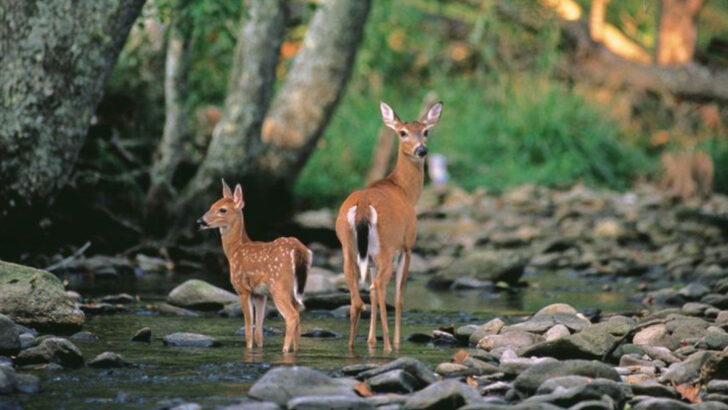Summer hikes are about more than just the sweat and scenic views. They’re prime time for spotting some of the most fascinating native creatures roaming right under our noses. From stealthy mammals to vibrant birds, the U.S. wilderness bursts with life that’s impossible to ignore. These 15 animals have mastered the art of summer survival—and you might just catch a glimpse of them on your next trail adventure. Some blend so perfectly with their surroundings, they’ll test your eyes and patience. Others make themselves known with calls and rustling leaves. Whether you’re a casual walker or a seasoned explorer, these critters add magic to every step. Get ready to meet the wild residents who turn ordinary hikes into unforgettable wildlife encounters!
White-tailed Deer
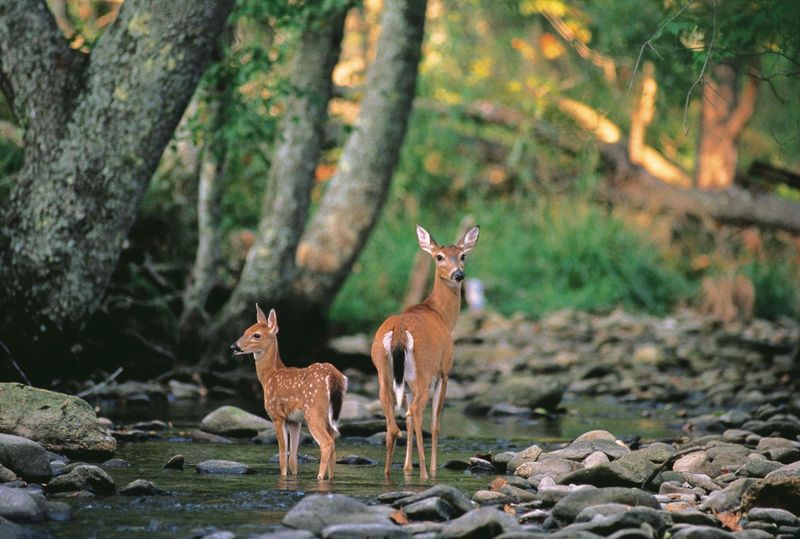
The white-tailed deer, with its elegant stance and iconic white tail, is a familiar sight on summer hikes in the U.S. These adaptable creatures can be seen grazing in meadows or peeking out from behind trees. Their ability to thrive in various environments makes them a common fixture in forests and fields alike.
Known for their keen senses, white-tailed deer are often curious yet cautious, providing hikers with brief but memorable encounters. Seeing a doe with her fawns is a special treat, adding a sense of serenity to the hiking experience.
Fun fact: White-tailed deer communicate using a range of vocalizations and body signals, including their distinct tail movements. Spotting one during a hike is always a delightful surprise.
American Black Bear

Spotting an American black bear is a thrilling experience for any hiker. These bears are native to various regions, from the dense forests of the East to the mountainous terrains of the West. Despite their name, black bears can be brown, cinnamon, or even white.
Black bears are generally shy and avoid human interaction, but their presence is a reminder of the wild beauty of American landscapes. Observing them from a safe distance can be awe-inspiring, as they forage for berries and insects.
Fun fact: Black bears have an excellent sense of smell, enabling them to locate food from miles away. Always respect their space and observe from afar.
Eastern Cottontail Rabbit
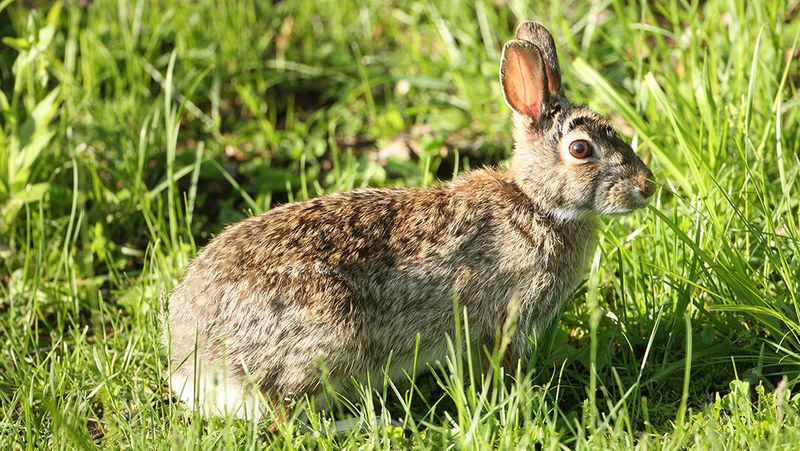
With a quick dart and a flick of its fluffy tail, the Eastern cottontail rabbit captivates hikers in open meadows and gardens. Found throughout the eastern U.S., these rabbits are known for their agility and speed.
Their large, curious eyes and twitching noses make them an endearing sight, often seen nibbling on vegetation. Despite their timidity, Eastern cottontails are survivors, adapting to suburban and rural environments alike.
Fun fact: Eastern cottontails can leap distances up to 15 feet. Their acute senses help them detect predators, making them masters of evasion in the wild. Keep an eye out for these charming creatures on your summer hikes!
Red Fox
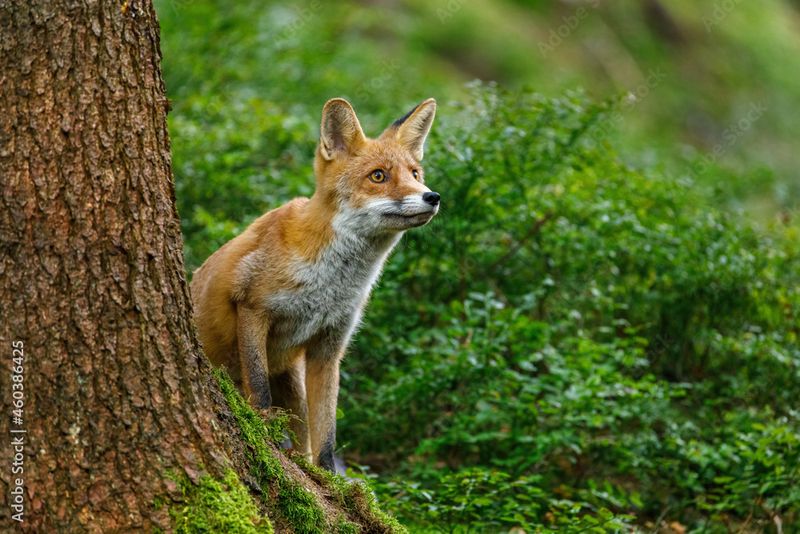
The red fox, with its bright, bushy tail and sharp features, is a symbol of cunning and adaptability. Often seen in open fields and woodlands, these animals are known for their intelligence and resourcefulness.
During summer hikes, you might catch a glimpse of a fox hunting for small mammals or playing with its kits. Their curious nature often leads them to explore new territories.
Fun fact: Red foxes communicate with a variety of vocalizations, including a bark and a high-pitched scream. Encountering one during a hike can be a moment of wonder and curiosity.
Bald Eagle
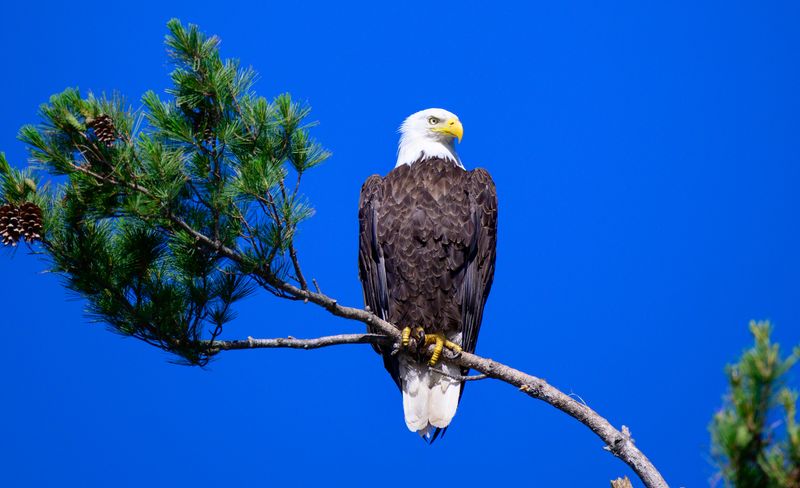
Soaring high above the American landscape, the bald eagle embodies strength and freedom. As the national bird of the United States, its presence is both inspiring and humbling.
Spotted near large bodies of water, bald eagles fish with precision, often seen diving to snatch their prey. Their impressive wingspan allows them to glide effortlessly above forests and lakes.
Fun fact: Bald eagles mate for life and return to the same nests year after year. Observing one during a hike is a reminder of the grandeur of the natural world and America’s wild heritage.
Great Blue Heron
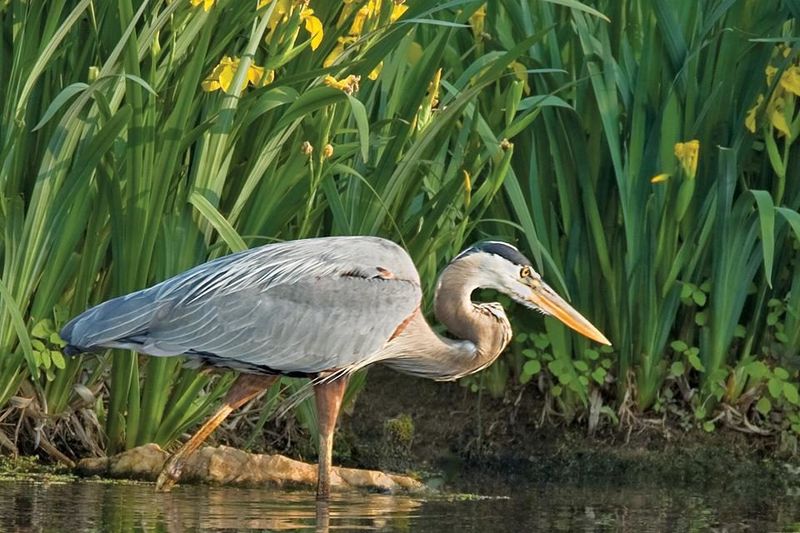
The great blue heron is a sight to behold, with its long legs and elegant neck. Wading through ponds and marshes, it strikes a regal pose as it hunts for fish and amphibians.
These birds are patient hunters, standing still for extended periods before striking with lightning speed. Their presence near water adds a tranquil element to any hike.
Fun fact: Great blue herons can be found in both freshwater and saltwater habitats, making them versatile inhabitants of various ecosystems. Spotting one is a peaceful and rewarding experience for nature lovers.
American Bullfrog
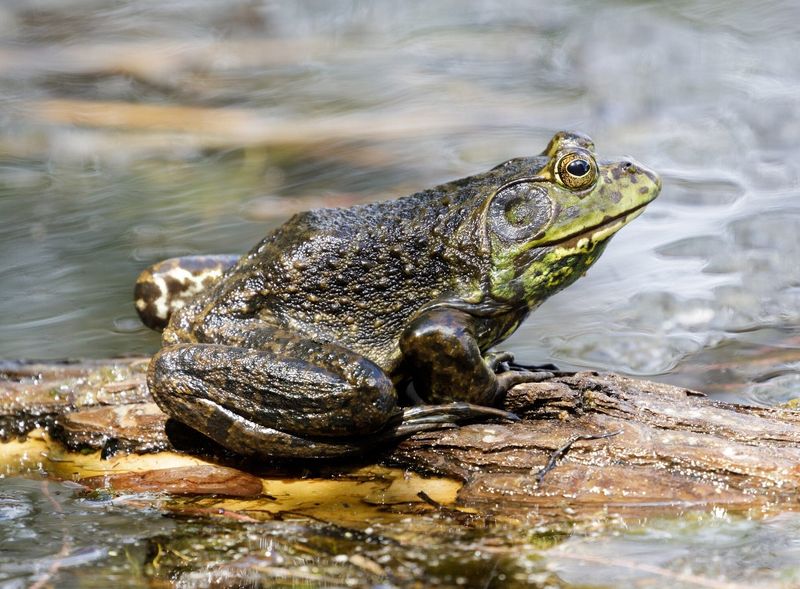
With a deep, resonant croak, the American bullfrog announces its presence in ponds and wetlands. These robust amphibians are the largest frogs in North America, capable of impressive leaps.
Their distinctive sound is a staple of summer evenings, creating a chorus that echoes across water bodies. Observing a bullfrog is a chance to witness the vibrancy of pond life.
Fun fact: Bullfrogs have a voracious appetite, consuming insects, small fish, and even other frogs. Their adaptability makes them a common sight in diverse aquatic environments.
Monarch Butterfly
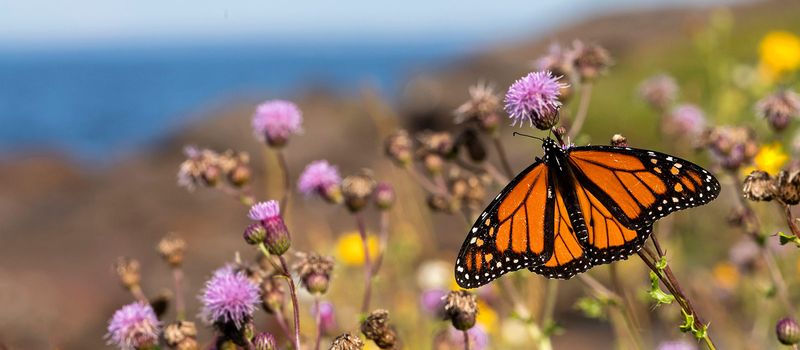
The monarch butterfly, with its striking orange and black wings, is a summer icon. Famed for its epic migration, it graces meadows and gardens during its journey.
These butterflies are not only beautiful but also serve as crucial pollinators. Watching a monarch flutter from flower to flower is a reminder of nature’s delicate balance.
Fun fact: Monarchs travel thousands of miles from the U.S. to central Mexico. Their journey is one of the most remarkable in the animal kingdom, showcasing resilience and determination. Spotting one on a hike is a moment of enchantment.
Eastern Chipmunk
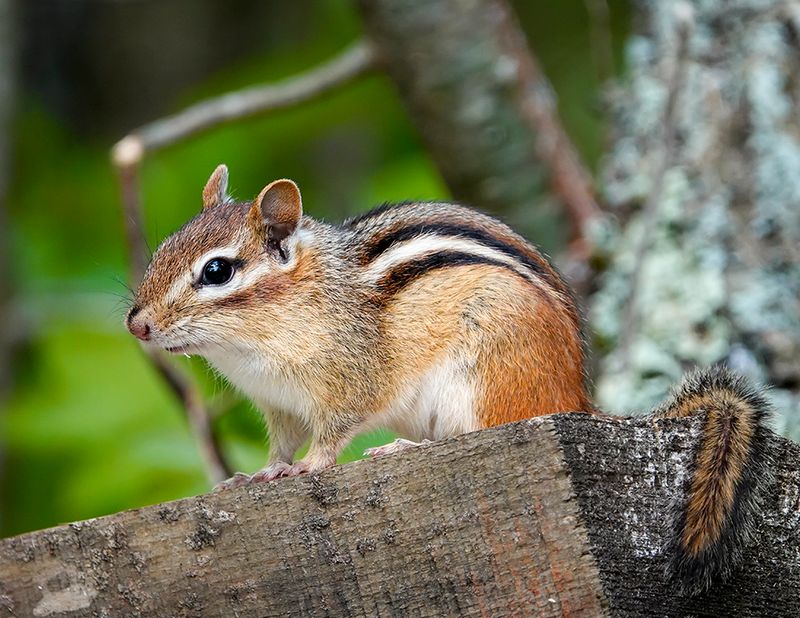
With its striped back and cheeks full of acorns, the eastern chipmunk is a lively sight on woodland hikes. These small, energetic rodents are known for their bustling activity and playful antics.
Chipmunks are expert foragers, often seen darting across trails in search of food. Their distinctive chirps can be heard echoing through the trees.
Fun fact: Eastern chipmunks hibernate during winter, storing food in their burrows to survive the cold months. Their presence in the forest adds a dynamic and entertaining element to any hike.
Northern Cardinal
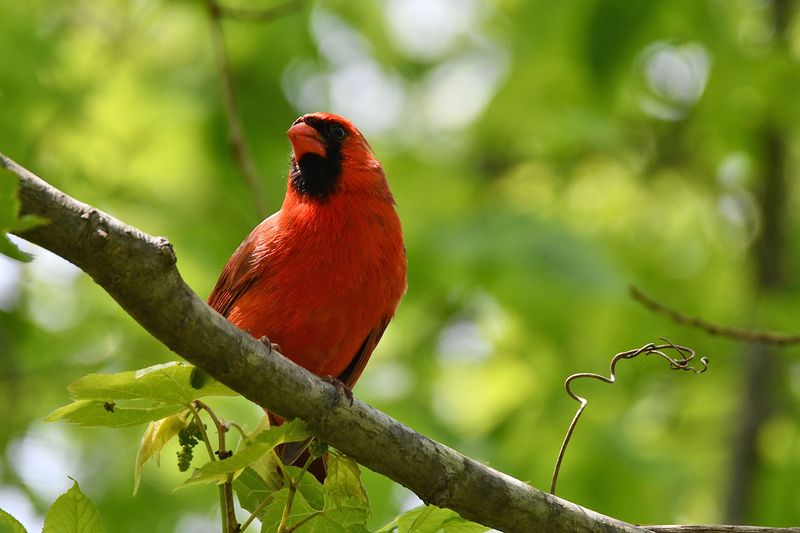
The northern cardinal, with its striking red feathers and melodic song, is a beloved bird among hikers. Often spotted in gardens and forests, these birds add a splash of color and music to the landscape.
Males are especially eye-catching, singing to attract mates and establish territory. Their presence is a visual and auditory delight for nature enthusiasts.
Fun fact: Cardinals are monogamous, forming lifelong bonds with their mates. Observing a cardinal during a hike can be a heartwarming experience, symbolizing love and fidelity in the avian world.
Gray Squirrel
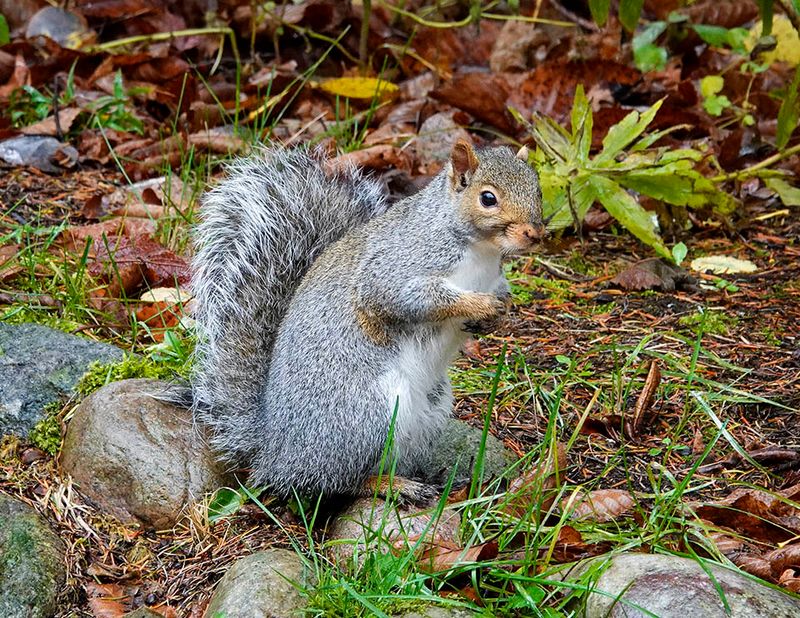
Gray squirrels are a quintessential part of the American landscape. With their bushy tails and agile movements, they are often seen scampering up trees and across lawns.
These squirrels are curious and resourceful, frequently foraging for nuts and seeds. Their presence adds a lively energy to parks and wooded areas.
Fun fact: Gray squirrels are known to bury their food for later consumption, often forgetting where they hid it, inadvertently aiding in forest regeneration. Spotting one on a hike is a reminder of nature’s playful side.
Raccoon
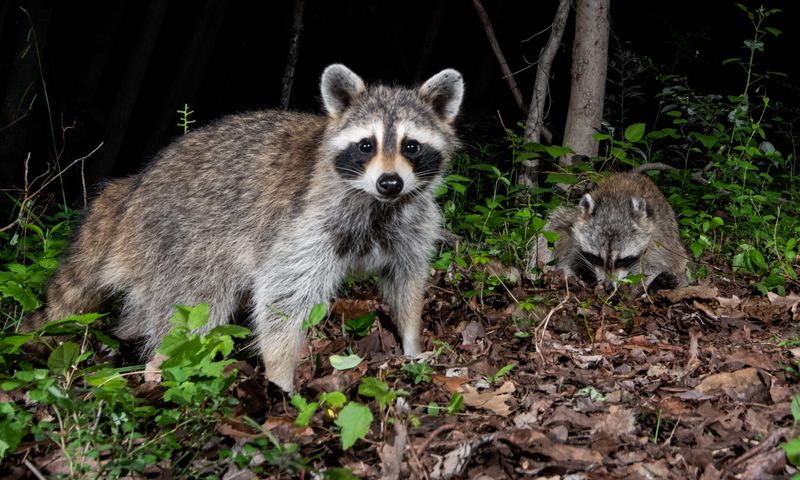
Raccoons, with their distinctive masked faces and ringed tails, are common nocturnal visitors to campsites and wooded areas. These intelligent creatures are known for their curiosity and adaptability.
During summer nights, raccoons can be seen foraging for food, their dexterous paws making short work of latches and containers. Observing one from a safe distance adds a touch of mystery to evening hikes.
Fun fact: Raccoons are excellent swimmers and climbers, often using these skills to evade predators. Their cleverness and resourcefulness make them fascinating members of the animal kingdom.
Western Bluebird
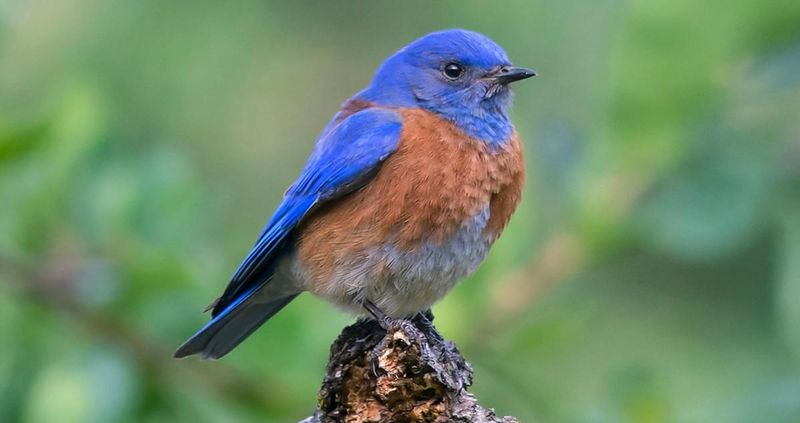
The western bluebird, with its azure plumage and gentle song, brings joy to hikers in open fields and woodlands. These birds are often seen perched on fence posts and tree branches, surveying their surroundings.
Bluebirds feed on insects and berries, contributing to the ecological balance. Their presence is a sign of a healthy ecosystem, often bringing a smile to those lucky enough to spot them.
Fun fact: Western bluebirds often nest in cavities, using old woodpecker holes or nest boxes to raise their young. Observing one is a treat for birdwatchers and casual hikers alike.
Mountain Goat
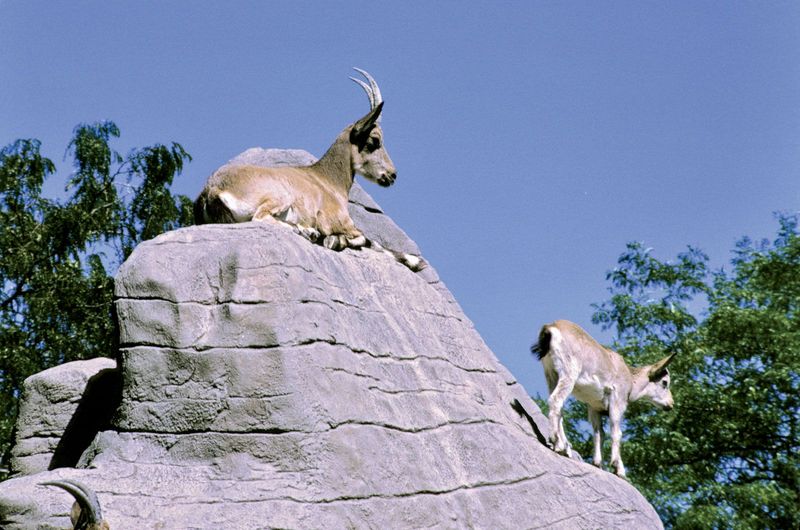
High in the mountainous terrains of the western U.S., the mountain goat stands as a symbol of resilience and strength. With their shaggy coats and surefooted climb, these goats navigate rocky cliffs with ease.
Spotting a mountain goat is a rewarding experience for hikers, showcasing their ability to thrive in extreme environments. Their presence adds an element of majesty to mountain hikes.
Fun fact: Mountain goats are not true goats but belong to the antelope family. Their exceptional climbing skills are a testament to their adaptation to the harsh alpine terrain.
Painted Turtle
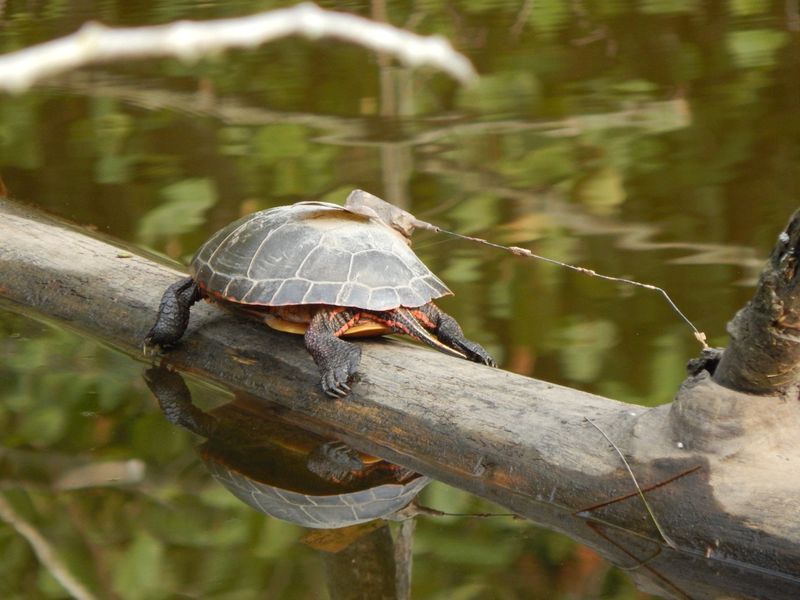
Beneath the shimmering sun, the painted turtle can often be found leisurely basking on logs near calm waters. Known for its vivid red, yellow, and black shell patterns, this reptile adds a splash of color to the natural canvas. As you quietly approach, you might catch it slipping into the water with graceful agility.
Their adaptability allows them to thrive in various habitats, from ponds to slow-moving rivers. A symbol of patience and longevity, these turtles can live for several decades. Fun fact: they can hibernate in the mud during cold months, slowing their metabolism to survive winter.

